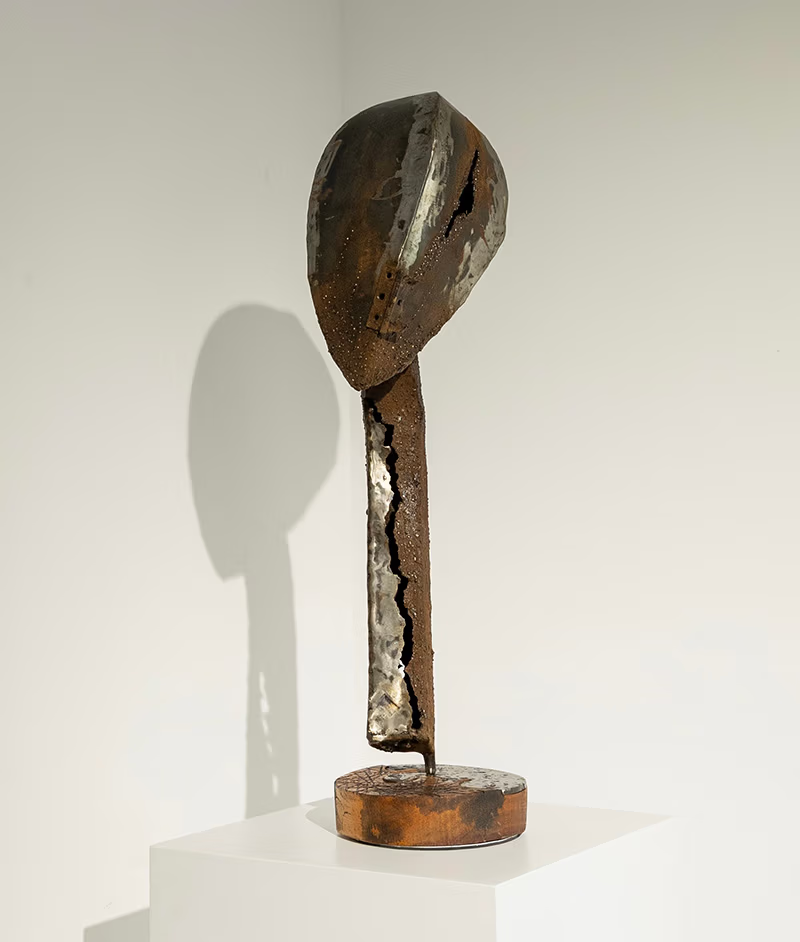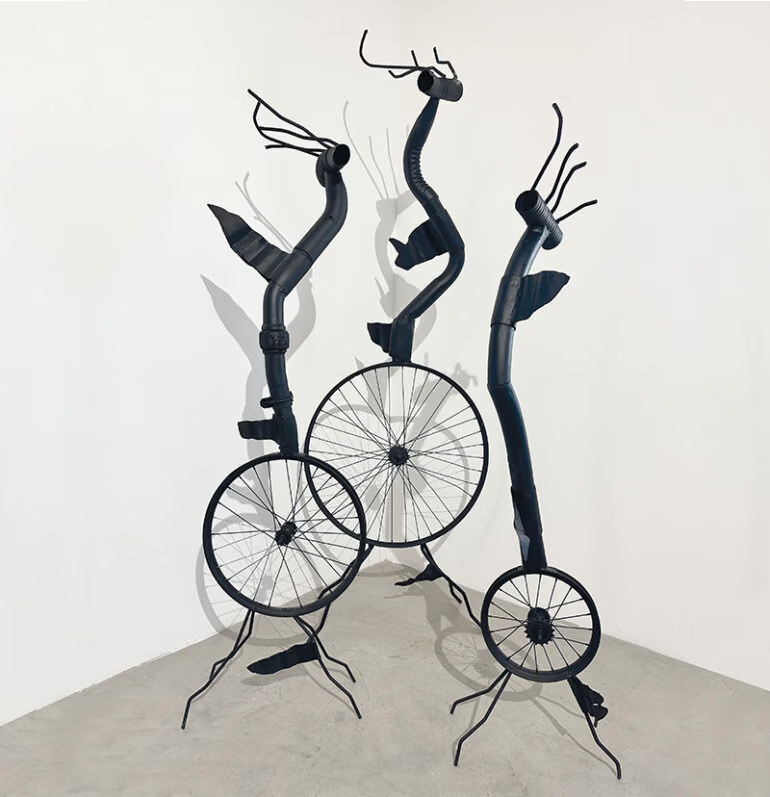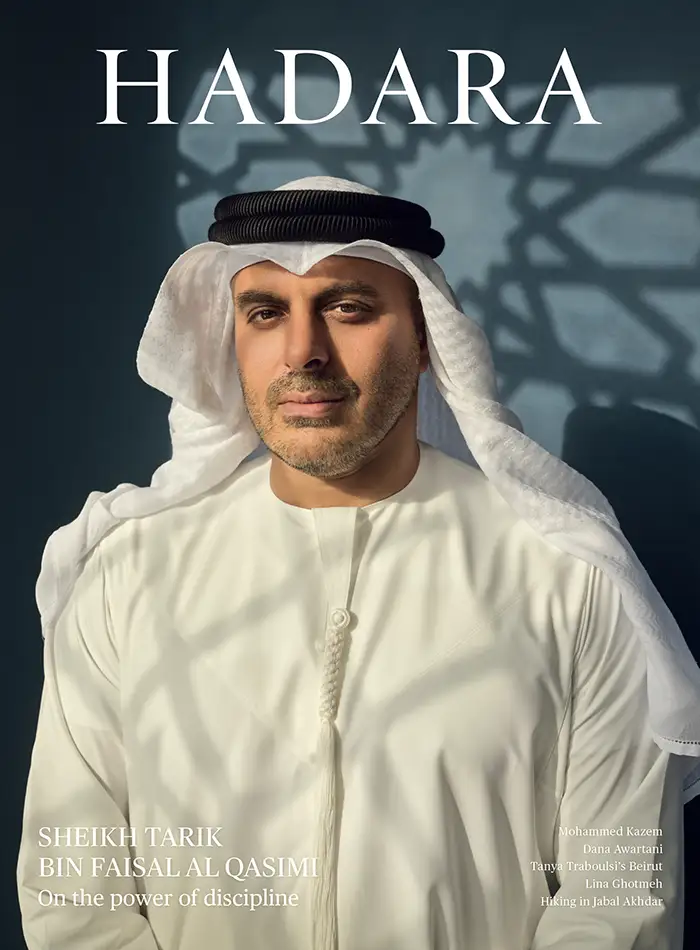Solace in soil
Sculptural works by Maggie Otieno and Dr. Mohamed Yousif
Despite disparate geographical, historical, and cultural backgrounds, a common thread is found in our relation to the earth. It is this concept that Shamma Al Mheiri explored for her curation of Solace in Soil, a duo exhibition running at Efie Gallery in Dubai until October 6. Al Mheiri, an Emirati curator and art historian, brought together the sculptural works of Kenyan Maggie Otieno and Sharjah’s Dr. Mohamed Yousif.
Through long, abstract figures crafted from distressed, 150-year-old railway sleepers, Otieno’s practice is rooted in the relics of a colonial past. The railway system, realised by imperial and colonial powers, brought radical change to her tribal nation. Otieno’s repurposing of the wood and metal into human-like sculptures is a reclamation of this narrative, a social commentary and a recognition of the story of the land, the soil, that once held them.

Opening image, Gazelles (2005), opening image, by Dr. Mohamed Yousif. Above, Maggie Otieno’s Still Whole (2024). Courtesy of Efie Gallery and the artists.
Dr. Yousif’s works are also lifelike, carrying movement within their static forms and calling to mind monuments, forefathers from an ancient past and their animal companions. They are composed of everyday objects that surround the artist—placemats woven from dried palm leaves, branches and tree fronds, pigments of organic dyes and spices. While in motion, Dr. Yousif’s works are also heavily rooted in the earth and soil from where they are sourced. This is where his works and Otieno’s intersect. The playfulness of his organic sculptures and the curiosity they evoke offer a compelling dialogue with Otieno’s sturdy, once-industrial forms.
Al Mheiri describes their parallel as being in relation to where the material is sourced and later presented, acknowledging its previous function as well as allowing it to take on new meanings. “The land continues to narrate and alter the story of the works as long as they exist,” she says.
The show’s title also conveys a sense of comfort. The material is revitalised, embedding cultural and historical resonance within it. “To comprehend the work is both to respect the story it is ready to tell and the story the material has already told,” Al Mheiri concludes. —Anna Seaman




